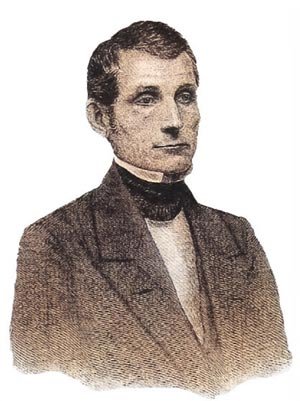New York Revival
1858 – March—New York – Jeremiah Lanphier

Jeremiah Lanphier

Jeremiah Lanphier
Various revival movements influenced society in the nineteenth century but 1858 in America and 1859 in Britain were outstanding. As is typical, it followed a low ebb of spiritual life. Concerned Christians began praying earnestly and anticipating a new move of God’s Spirit.
Revival broke out at evangelistic meetings during October 1857 in Hamilton, Canada, led by the talented Phoebe Palmer, assisted by her physician husband, Walter. Phoebe, a firebrand preacher, impacted North America and England with her speaking and writing. She wrote influential books and edited The Guide to Holiness, the most significant magazine on holiness at that time. Her teaching on the baptism of the Holy Ghost and endowment of power spread far and wide.
The Palmers ministered widely, fanning the flames of revival and seeing thousands converted. Prayer meetings began to proliferate across North America and in Great Britain.
New York Revival
Jeremiah Lanphier, a city missioner, began a weekly noon prayer meeting in Fulton Street, New York, in September 1857. By October it grew into a daily prayer meeting attended by many businessmen. Anticipation of revival grew, especially with the stock market collapse that October after a year of depression, and with the threatening clouds of the looming American Civil War (1861–65).
By the beginning of 1858, that Fulton Street prayer meeting had grown so much that they were holding three simultaneous prayer meetings in the building, and other prayer groups were starting in the city. By March, newspapers carried front-page reports of over 6,000 people attending daily prayer meetings in New York and 6,000 attending them in Pittsburgh. Daily prayer meetings were held in Washington, D.C. at five different times to accommodate the crowds.
Other cities followed the pattern. Soon a common midday sign on business premises read: “Will re-open at the close of the prayer meeting.”
By May, 50,000 of New York’s 800,000 people were new converts. A newspaper reported that New England was profoundly changed by the revival, and in several towns no unconverted adults could be found!
A leading Methodist paper reported these features of the revival: few sermons were needed, lay people witnessed, seekers flocked to the altar, nearly all seekers were blessed, experiences remained clear, converts had holy boldness, religion became a social topic, family altars were strengthened, nightly testimony was abundant, and conversations were marked with seriousness.
The years 1858–59 saw a million Americans become converted in a population of 30 million, and at least a million Christians were renewed, with lasting results in church attendance and moral reform in society.
© Geoff Waugh. Used by permission.
For further research:
Great Revivals and the Great Republic
The Second Evanhgelical Awakening in America
A Time for Prayer: The Third Great Awakening



